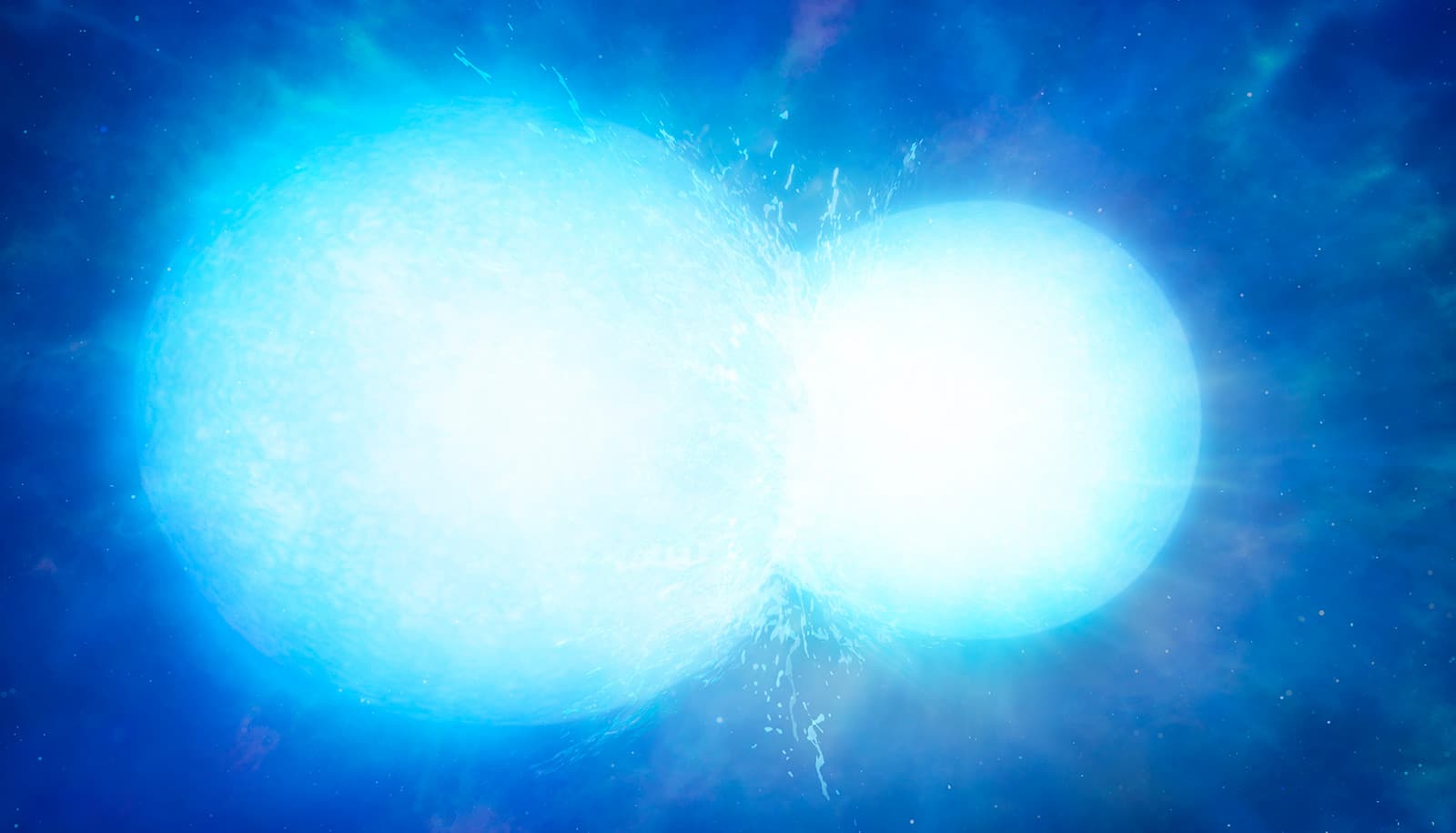The flashing of a nearby star led astronomers to discover that it’s part of a rare and mysterious system called a “black widow binary.”
A black widow binary a type of system consisting of a rapidly spinning neutron star, or pulsar, that is circling and slowly consuming a smaller companion star, as its arachnid namesake does to its mate.
Researchers found the black widow binary using data from the Zwicky Transient Facility (ZTF), a California-based observatory that takes wide-field images of the night sky.
“Everything seems to point to it being a black widow binary. But there are a few weird things about it, so it’s possible it’s something entirely new.”
“This discovery highlights the potential of large time-domain surveys like ZTF to find rare astrophysical objects,” says coauthor Eric Bellm, a research assistant professor of astronomy at the University of Washington, fellow at the DiRAC Institute, and scientist with both the ZTF and the Chile-based Vera C. Rubin Observatory.
Astronomers know of about two dozen black widow binaries in the Milky Way. This newest candidate, named ZTF J1406+1222, lies 3,000 light-years from Earth and has the shortest orbital period yet identified, with the pulsar and companion star circling each other every 62 minutes.
The system is unique in that it also appears to host a third far-flung star that orbits the two inner stars every 10,000 years. This “triple” black widow raises questions about how such a system could have formed.
Based on its observations, the team proposed an origin story: As with most black widow binaries, the triple system likely arose from a dense constellation of old stars known as a globular cluster. This particular cluster may have drifted into the Milky Way’s center, where the gravity of the central black hole pulled the cluster apart while leaving the triple black widow intact.
“It’s a complicated birth scenario,” says Kevin Burdge, a postdoctoral researcher at the Massachusetts Institute of Technology and lead author of the paper in Nature. “This system has probably been floating around in the Milky Way for longer than the sun has been around.”
Pulsars, which are the collapsed cores of massive stars, have a dizzying rotational period, spinning around every few milliseconds, and emitting flashes of high-energy gamma and X-rays in the process.
Normally, pulsars spin down and die quickly as they burn off a huge amount of energy. But occasionally, the pulsar’s gravity can pull material off of a passing wayward star, providing new energy to spin the pulsar back up. The “recycled” pulsar then starts reradiating energy that further strips the star and eventually destroys it.
While most black widow binaries are found through the gamma and X-ray radiation emitted by the central pulsar, the team used visible light from the flashing from the binary’s companion star to detect ZTF J1406+1222.
Burdge recognized that the companion star’s so-called “day” side—the side perpetually facing the pulsar—can be many times hotter than its “night” side, due to the constant high-energy radiation it receives from the pulsar. He reasoned that if astronomers observed a star whose brightness was changing periodically by a large amount, it would be a strong sign that it was in a binary with a pulsar.
To test this theory, Burdge and his coauthors studied the brightness of stars from ZTF data to see whether any were changing dramatically by a factor of 10 or more, and on a time scale of about an hour or less. The team was able to pick out the dozen known black widow binaries, validating the new method’s accuracy. They then spotted a star whose brightness changed by a factor of 13, every 62 minutes, indicating that it was likely part of a new black widow binary.
Looking back through decades-old measurements of the star by the Sloan Digital Sky Survey, they found evidence that the binary was being trailed by another distant star. By their calculations, this third star appeared to be orbiting the inner binary every 10,000 years.
Curiously, the astronomers have not directly detected gamma or X-ray emissions from the pulsar in the binary, which is the typical way that black widows are confirmed. As a result, for now ZTF J1406+1222 is considered a candidate black widow binary, which the team hopes to confirm with future observations.
“Everything seems to point to it being a black widow binary,” Burdge says. “But there are a few weird things about it, so it’s possible it’s something entirely new.”
The team plans to continue observing the new system, as well as apply the optical technique to illuminate more neutron stars and black widows in the sky.
“Identifying this black widow binary with ZTF alone suggests that we should be able to find even more such systems in a few years when the even more powerful Vera C. Rubin Observatory comes online,” says Bellm.
Additional coauthors are from the University of Warwick; Caltech; McGill University; the University of Maryland, College Park; the University of Minnesota; the University of Sheffield; the University of Wisconsin–Milwaukee; National Cheng Kung University; National Tsing Hua University; Institute of Astrophysics of the Canary Islands; the University of La Laguna; Stockholm University; and the University of California, Berkeley.
The National Science Foundation funded the work.
Source: University of Washington


